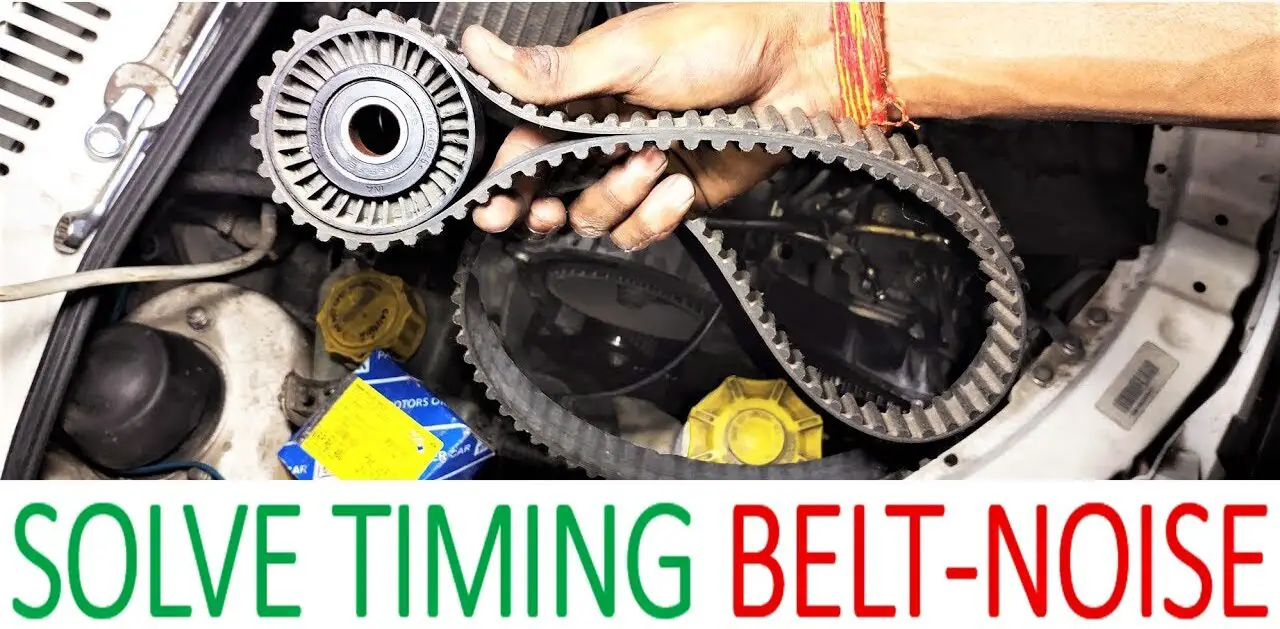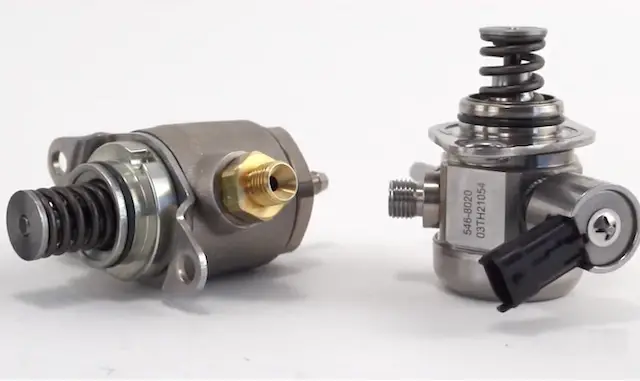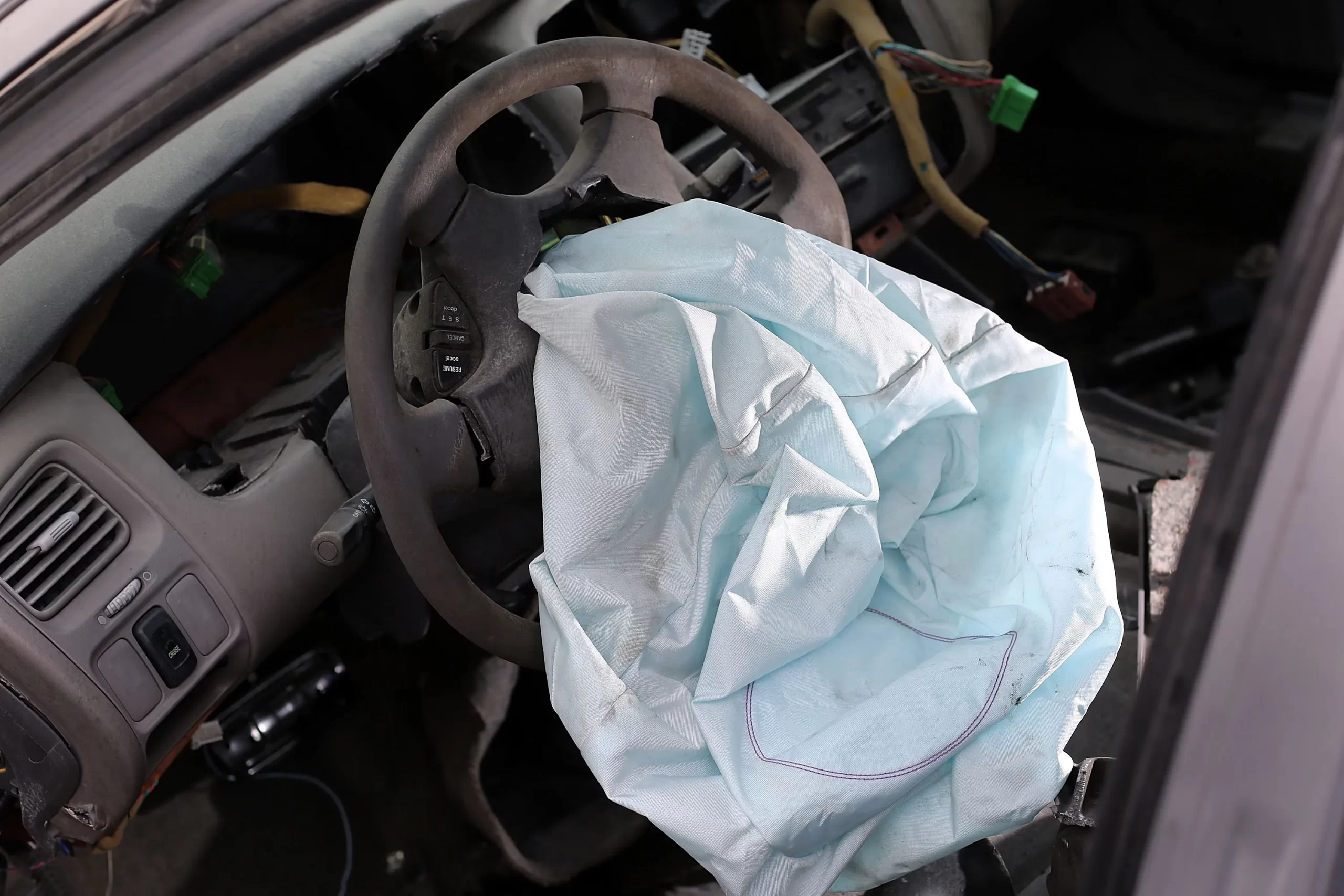Experiencing a car belt noise when accelerating can be disconcerting, but understanding the root cause can help address the issue promptly.
This common problem often stems from various factors related to the vehicle’s drive belt system.
When you hit the gas pedal and encounter an unexpected sound, it may indicate wear and tear on the belts or misalignment issues.
The car belt noise when accelerating is typically a result of the belts slipping or rubbing against other components.
This article delves into the reasons behind this automotive nuisance, shedding light on what drivers can do to diagnose, prevent, and remedy the situation.
By unraveling the mystery behind the car belt noise when accelerating, you’ll be better equipped to keep your vehicle running smoothly and enjoy a quieter driving experience.
What are the Reasons Why A Car Belt Make Noise When Accelerating?
If you’ve ever found yourself behind the wheel, only to be interrupted by a loud, irksome noise emanating from under the hood, chances are your car’s belt is the culprit. Responsible for the seamless operation of essential accessories like the air conditioning and power steering pump, the car belt plays a crucial role in your vehicle’s functionality.
Let’s delve into the key factors that might lead to that annoying car belt noise:
1: Incorrect Belt Installation
The leading cause of a noise car belt often boils down to incorrect installation. When fitting a new belt, ensuring proper tension and alignment with the pulleys is imperative. Neglecting this crucial step can result in persistent squealing and, ultimately, belt failure. The solution lies in replacing the belt and meticulously reinstalling it with precision.
2: Leaks
Leaks from various engine components, such as water, oil, or other fluids, can contaminate the belt and induce noise. Identifying the source of the leak is essential. Once located, addressing and repairing the leak while thoroughly cleaning the belt can resolve the issue and restore quiet operation.
3: Misaligned Pulleys and Tensioner

Misaligned pulleys or tensioners can lead to slippage, causing the belt to emit unwelcome noises. Correcting this problem involves adjusting the pulleys and tensioner to ensure proper alignment of the belt. This straightforward adjustment can eliminate the irritating sound and enhance the overall efficiency of the belt system.
4: Wear and Tear
Over time, continuous use can wear down the belt, causing it to lose its original stiffness. The resulting wear and tear can manifest as a glazed, brittle, or cracked surface, accompanied by squealing noise. Replacing the worn-out belt with a new one is the most effective solution, restoring optimal performance and silencing the noise.
5: Cold Weather
Cold weather can contribute to the rubber on the car belt becoming stiff, leading to slippage and squealing. To address this issue, consider warming up the engine before driving or applying a belt dressing to enhance grip on the pulleys. These simple measures can counteract the effects of cold weather, ensuring a quieter driving experience.
How To Fix Car Belt Noise When Accelerating?
Addressing the car belt noise issue involves various methods, including:
- Timing Belt Inspection
A noticeable squealing noise emanating from the timing belt serves as a clear indicator of potential issues. Having it inspected by a mechanic is crucial in identifying the source of the noise and determining whether any components require replacement or repair. Timely attention to timing belt concerns is vital, as neglect may lead to severe engine damage down the line.
- Serpentine/Drive Belt Replacement
The serpentine/drive belt plays a pivotal role in driving multiple engine accessories like the alternator and power steering pump. Composed of rubber with ribs on the underside gripping the pulleys, this long, continuous belt may produce a squealing noise when worn or damaged. Early identification of signs such as cracks, fraying, or glazing is essential to prevent further harm to engine accessories. Regular inspections and maintenance are key to avoiding future serpentine/drive belt issues.
- Drive Belt Tensioner Replacement
The drive belt tensioner is a critical component in maintaining the proper functioning of the serpentine/drive belt system. Responsible for ensuring the correct tension on the belt, a worn or damaged tensioner can lead to belt slippage and subsequent squealing. The proper tensioner function is paramount in the smooth operation of the serpentine/drive belt system.
An inadequately tensioned belt can result in slippage or dislodgement from pulleys, causing damage to the belt and associated components.
Conversely, excessive tension can lead to premature wear on the belt, tensioner, and other parts.
A well-functioning drive belt tensioner helps prevent these issues, extending the lifespan of the serpentine/drive belt and related components.
If any of these problems arise, seeking the expertise of a qualified mechanic is essential for a thorough inspection and resolution.
Can I drive my car if the belt is making noise?
While it’s technically possible to drive your car if the belt is making noise, it’s not advisable to do so for an extended period.
The noise is typically an indication of an underlying issue with the belt or one of the components it drives.
Ignoring the noise and continuing to drive the car could lead to further damage and potential breakdowns.
Here are a few reasons why it’s not recommended:
- Identifying the Issue
The noise from the belt could be a sign of wear, misalignment, or damage. Ignoring the noise may make it challenging to identify and address the root cause. Early detection and intervention can prevent more extensive damage and costly repairs.
- Risk of Breakdown
If the belt is damaged or about to fail, there’s a risk of it breaking while you’re driving. A broken belt can disable essential components like the alternator or power steering, leading to loss of power or control. This could result in a breakdown, potentially leaving you stranded.
- Engine Damage
In some cases, a worn or damaged belt can affect critical engine components. For instance, a timing belt that fails to function properly could lead to engine misfires or, in worst-case scenarios, engine damage. Ignoring the noise may exacerbate these issues.
- Safety Concerns
If the noise is due to a problem with the power steering pump or other crucial components, it could impact your ability to control the vehicle safely. It’s essential to address such issues promptly to ensure optimal driving conditions.
What does a damaged belt sound like?
A damaged belt can produce a variety of sounds, including squealing, screeching, or grinding noises. These noises typically indicate issues such as wear, misalignment, or damage to the belt, and it’s advisable to have the belt inspected by a mechanic to determine the specific cause.
How do you know if a belt tensioner is bad?
A faulty belt tensioner can exhibit several signs indicating its condition. Here are common indicators that a belt tensioner may be bad:
- Unusual Noises
A damaged belt tensioner often produces squeaking, rattling, or grinding noises. These sounds may result from a loose or misaligned tensioner, indicating potential issues.
- Visible Wear
Inspect the belt tensioner for visible signs of wear, such as cracks, fraying, or glazing on the belt itself. Additionally, check for any wobbling or irregular movement of the tensioner pulley.
- Belt Misalignment
A bad tensioner can lead to improper belt alignment. If you notice that the belt is not running smoothly on the pulleys or appears to be off-center, it may be a sign of tensioner problems.
- Belt Slippage
Tensioners are designed to maintain the correct tension on the belt. If the tensioner is failing, the belt may slip or squeal, especially during acceleration or when additional load is placed on the accessories it drives.
- Visible Damage
Check the tensioner for any physical damage, such as cracks or bent components. Any visible damage may compromise the tensioner’s effectiveness.
- Difficulty in Turning Accessories
A failing tensioner may result in increased resistance when manually turning the accessories driven by the belt, such as the alternator or power steering pump.
What does a damaged belt sound like?
A damaged belt can produce sounds like squealing, screeching, or grinding.
How do you know if your car belt is cracking?
To check if your car belt is cracking, visually examine its surface. Look for small lines or fissures on the belt material, commonly known as cracks.
These cracks can be seen on the underside of the belt, where it comes in contact with pulleys.
If you notice any visible damage, such as cracks or splits in the belt, it indicates wear and potential weakening of the belt material.
Cracking is often a sign of aging or exposure to harsh conditions.
Regular inspection of your car belt for these visible signs helps in the early detection of issues, allowing for timely replacement and preventing more severe problems down the line.
If you observe significant cracking, it’s advisable to consult with a mechanic to determine the best course of action for maintaining the reliability of your vehicle’s belt system.
How many belts are in a car?
The number of belts in a car can vary depending on the make and model of the vehicle. However, most modern cars typically have three primary types of belts:
- Serpentine Belt
This is a single, long belt that drives multiple engine accessories, such as the alternator, power steering pump, and air conditioning compressor.
- Timing Belt or Timing Chain
Not all cars have a timing belt; some use a timing chain. Both serve the purpose of synchronizing the movement of the engine’s camshaft and crankshaft. The timing belt or chain ensures that the engine’s valves open and close at the right time in coordination with the piston movement.
- Drive Belts (Accessory Belts)
In addition to the serpentine belt, some cars may have separate drive belts for specific accessories, like the water pump or air conditioning compressor.
How do I know if my timing belt needs changing?
Detecting when your timing belt needs changing is crucial for preventing potential engine damage. One of the most common signs is age or mileage. Timing belts generally have a recommended lifespan, usually specified by the vehicle manufacturer.
If your car has reached the recommended mileage or has been in use for several years, it’s advisable to check the condition of the timing belt. Additionally, listen for unusual noises coming from the engine, such as ticking or squeaking sounds. Any abnormal sounds can be an indication of wear or misalignment in the timing belt system.
Another key indicator is visual inspection. If you notice visible signs of damage on the timing belt, such as cracks, fraying, or a glossy appearance, it’s a clear signal that the belt is deteriorating and may need replacement.
It’s crucial to address these signs promptly, as a failing timing belt can lead to severe engine damage. Keep in mind that the specific recommendations for timing belt replacement can vary by vehicle make and model, so consulting your car’s manual or seeking advice from a qualified mechanic is essential for accurate guidance based on your car’s specifications.
FAQs – Car Belt Noise When Accelerating
Are there specific reasons why my car belt makes noise when accelerating?
Yes, several factors contribute to car belt noise when accelerating. These include incorrect installation, leaks from engine components, misaligned pulleys or tensioners, wear and tear on the belt, and the impact of cold weather on the rubber.
Is it necessary to address the car belt noise immediately?
It is advisable to address car belt noise promptly. While you can technically drive with a noisy belt, ignoring the issue may lead to further damage and potential breakdowns. Timely intervention can prevent more extensive problems.
How can I effectively resolve the car belt noise issue?
Resolving the car belt noise involves identifying the root cause. This may include inspecting and reinstalling the belt correctly, addressing leaks, realigning pulleys and tensioners, replacing worn-out belts, or implementing strategies for cold weather conditions. Seeking the expertise of a qualified mechanic for inspection and resolution is recommended.
What are the common sounds associated with a damaged belt?
A damaged belt can produce various sounds, including squealing, screeching, or grinding. These noises often indicate wear, misalignment, or damage to the belt or related components.
Can a damaged belt lead to engine issues?
Yes, neglecting a damaged belt can lead to engine problems. For instance, a failing timing belt can impact the engine’s timing, potentially causing misfires or more severe issues.
When should I consider replacing my timing belt?
The timing belt replacement interval varies by vehicle. Consult your car’s manual or a mechanic for specific recommendations based on either mileage or years of use.
What preventative measures can I take for my car belt?
Regular inspections, prompt replacement of worn-out belts, correct installation, and addressing unusual noises can prevent future issues with your car belt system. Following the manufacturer’s maintenance recommendations is crucial.
Conclusion – Car Belt Noise When Accelerating
Addressing car belt noise when accelerating is crucial for preventing potential damage.
Whether it’s correcting installation issues, fixing leaks, or replacing worn-out belts, timely action ensures a smoother and quieter driving experience.
Regular inspections and adherence to maintenance recommendations help maintain the longevity of your vehicle’s belt system.
If you encounter persistent issues, consulting with a qualified mechanic is essential for accurate diagnosis and resolution.
Remember, proactive measures today can save you from costly repairs tomorrow.




